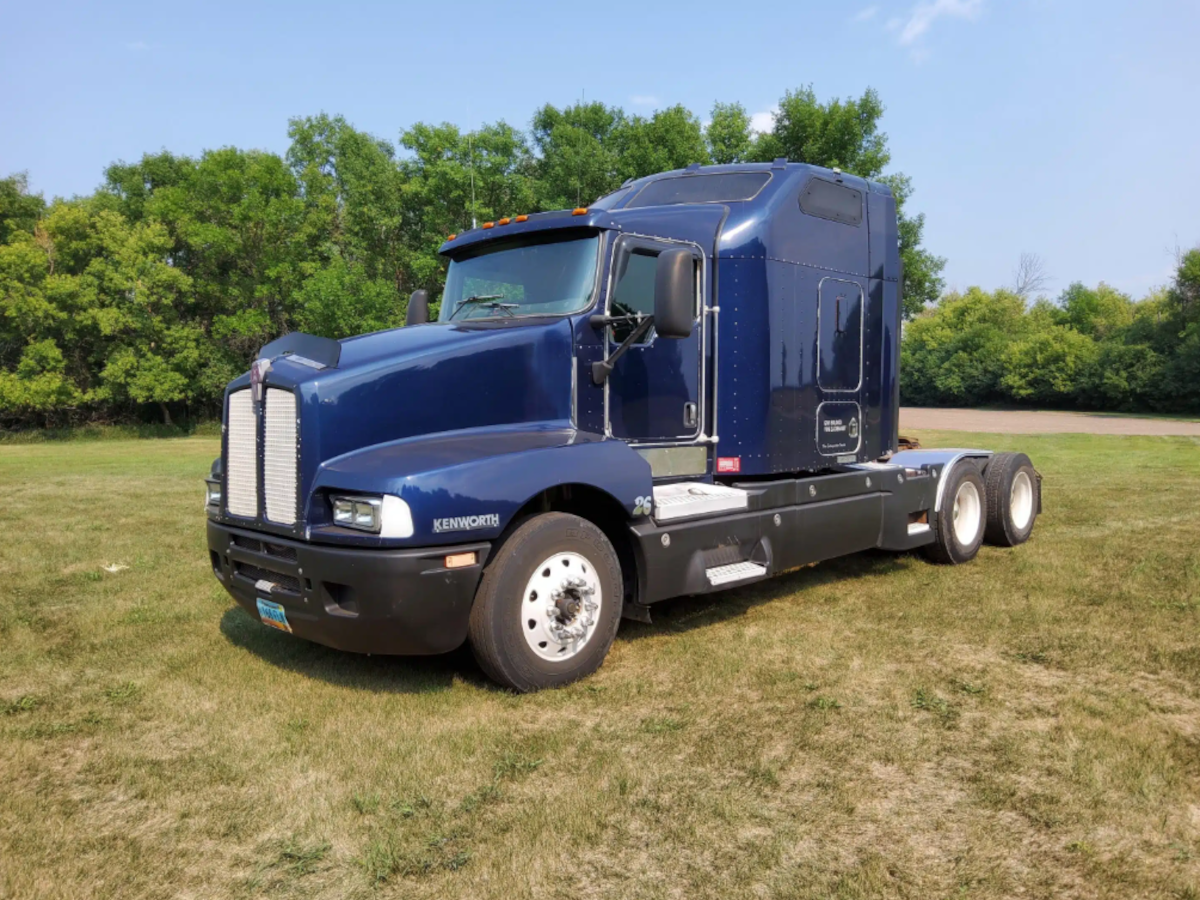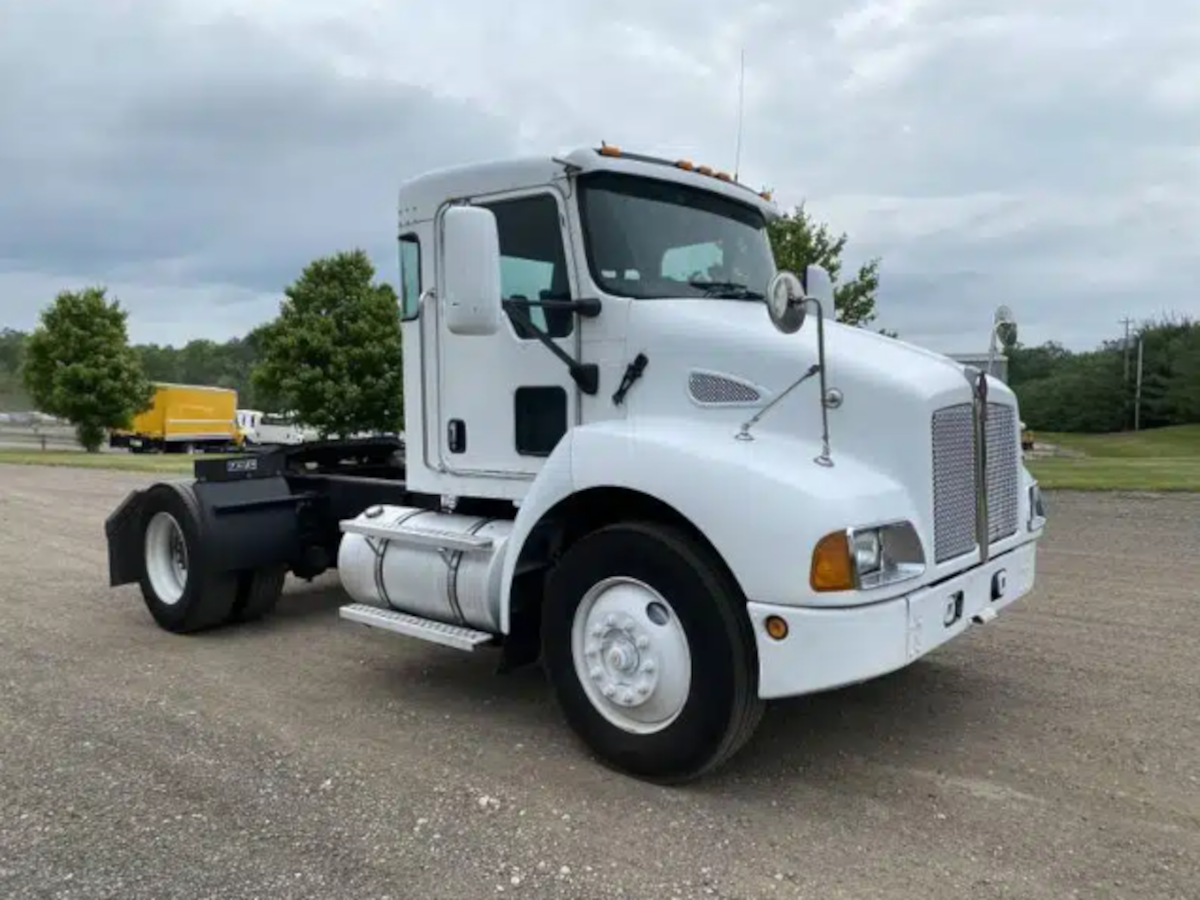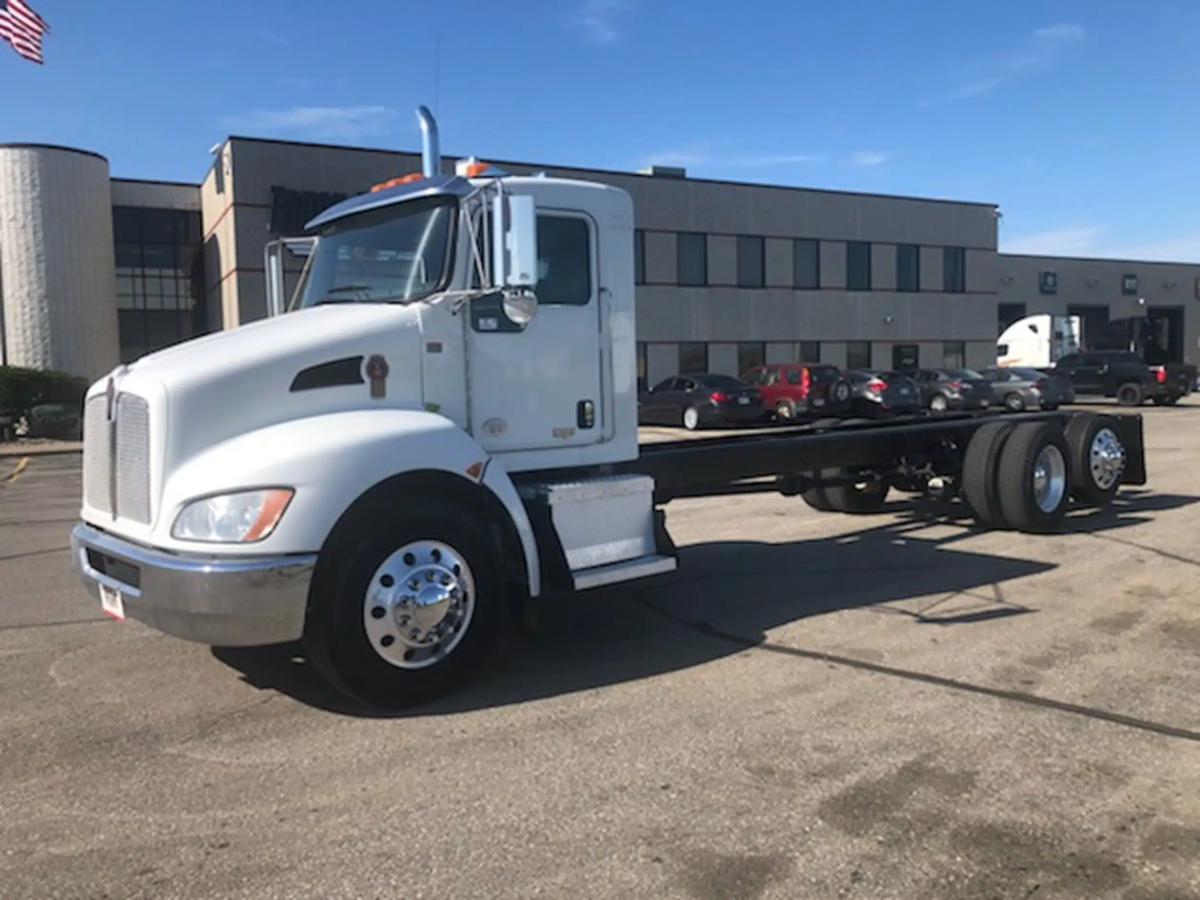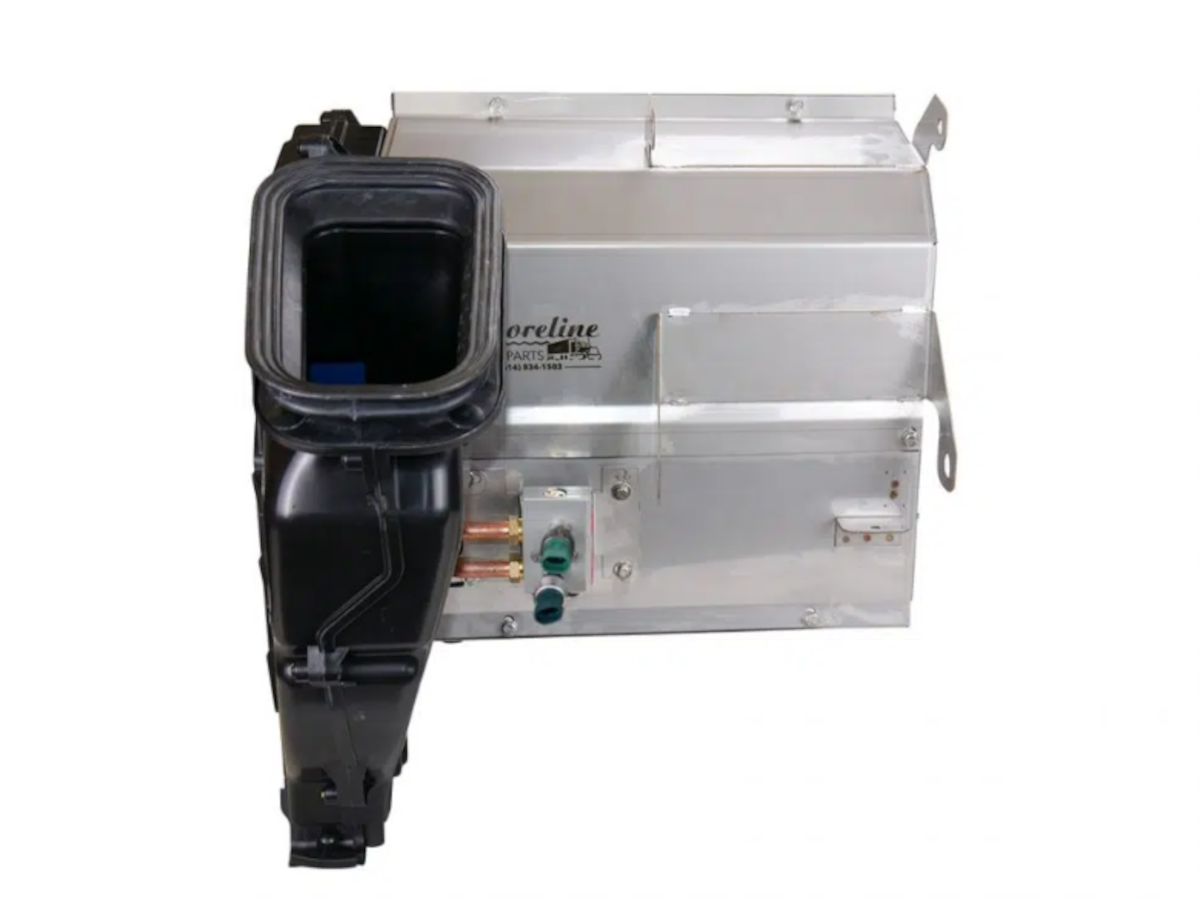Dec 4th 2024
Contrary to popular belief, finding a perfect conventional truck for city use is more challenging than looking for regional haulers. Getting a Class 7 or mid-Class 8 truck that can give enough payload while being suitable for narrow city roads can be a chore.
Fortunately, Kenworth released a medium-duty conventional truck to help contractors and drivers carry their loads around busy and tiny city roads. The Kenworth T300 might be smaller than other Kenworth trucks, but it has proven its productivity and profitability through the years.
History of the Kenworth T300
To understand Kenworth T300's current design, we'll look at its development through time.
Kenworth T600, T800, and W900
There's no denying that the T600, T800, and W900 are three of the most popular models of Kenworth, thanks to their revolutionary designs and unbeatable efficiency. The Kenworth T600 showed the American truck market how to achieve excellent fuel economy through aerodynamics; the T800 showed unparalleled versatility; and the W900 proved an all-rounder for conventional-cab trucks.

The Kenworth T300 is designed to combine the features of Kenworth's most popular models and compress them into a conventional medium-sized truck for city use. This way, city and regional businesses alike can enjoy fuel economy, versatility, and profitability.
Kenworth T300
In 1994, Kenworth recognized the market's need for medium-duty conventional trucks. Thus, the introduction of the T300. The entire lineup sported numerous 10-liter engines, such as the PACCAR PX8, CAT C7, and CUMMINS ISB, among others.

As mentioned, the T300 sported the designs of Kenworth's top 3 models, which made some truck experts consider the model as a lightweight Class 8 truck. Regardless of its classification, the T300's powerful engine, excellent payload output, and efficient design make it one of the most durable medium-duty trucks on the market. Furthermore, Kenworth also released an Aerocab sleeper variant of the T300, which integrated the Aerodyne II sleeper cab and the driver's cab into a single unit.
Kenworth T300 Class 6
In 2006, the demand for mid-sized city trucks for warehouse pickup and delivery grew exponentially. Thus, Kenworth introduced a Class 6 iteration of the T300 with 25,000 GVWR and air brakes specifically designed for deliveries.

The T300 Class 6 came with an 8,000-lb front axle, a 17,000-lb rear axle, air brakes, and a low profile chassis with options for 19.5- or 22.5-inch wheels and tires. It also came with Cummins ISB and ISC engines and Caterpillar C7 engines.
The overall design of the T300 Class 6 was initially meant to address the further regionalization of freight processes throughout the country, with companies increasingly using non-CDL units for their delivery services.
Kenworth T370
Due to the growing demand for mid-sized conventional trucks, Kenworth released a couple of new models within the range–the Class 5 T170 commercial truck, Class 6 T270 electric hybrid, and the Class 7 T370 that could be further modified to fit into the Class 8 category. The T370 effectively replaced the T300 in 2008 as Kenworth's flagship medium-duty conventional-cab truck.

The T370 was manufactured with PACCAR PX7 or PX8 engines, available in Allison automatic transmissions or Eaton manual shifts. While Kenworth's mid-sized conventional trucks maintained a significant market demand, they were discontinued in 2021 for upgraded models that fit current standards.
Kenworth T380
In April 2021, Kenworth further doubled down on the mid-size commercial category as they released three upgraded models–the T180, T280, and T380. All units sported a PACCAR TX-8 automatic transmission, promising better versatility, convenience, and driving comfort than their predecessors.

The T380 was made with new bumper-to-back cab measurements and hood types for better versatility. It was also given extra cab space for more high-end, medium-duty applications. The T380 was further upgraded into a model geared towards vocational applications with the T380V.
Design of Kenworth T300
The introduction of the Kenworth T300 truly inspired numerous lines of medium-duty conventional-cab trucks. To further understand why business owners and truck drivers rave about the T300, let's look at its driving comfort and riding efficiency.
In 2006, MHC-Kenworth in Fort Worth, Texas, put a Kenworth T300 to the test.
Comfort and Durability
The first and most notable feature of the T300 is the ease it provides drivers when mounting the truck. It had well-placed handles, traction-grip steps, and wide-opening bulkhead-type doors. These step features, paired with the cab's low profile, made it easier and faster for drivers to ride the truck. This is important for delivery services, where drivers are expected to constantly hop in and out of the truck.
Furthermore, the steps were also mounted to the chassis, making them sturdy. The cab is also constructed with aluminum and fiberglass to resist corrosion, with huck bolts rather than rivets to make it more durable.
Cab Interior
The large wraparound one-piece windshield, 20-degree sloped hood with integrated fenders, DayLite door windows, and peep window in the passenger door gave drivers excellent visibility and accessibility. The cab also didn't have any foot room intrusion, a tilting steering wheel, and easy-to-reach controls, which provide an ergonomic driving position to drivers.
Overall Ride
The MHC-Kenworth reviewer tried the Kenworth T300 with and without load. The riding experiences a breeze in both cases, with excellent maneuverability, responsiveness, and suspension control. The 7.2 Caterpillar C7 ACERT diesel engine, mated with an Eaton fuller UltraShift six-speed transmission, also provided enough power for all kinds of traffic and road conditions, with less engine noise and a reasonable emission rate.

While UltraShift had a learning curve, getting used to the automatic transmission made driving more convenient and comfortable. Again, this is especially important for deliveries and pickup services, as it allows quicker acceleration without power interruption, giving truck drivers improved productivity with less driving effort.
MHC-Kenworth's overall review of the Kenworth T300 proved that the model is excellent for business use. Aside from aiding drivers to improve productivity through riding convenience and comfort, it's also designed with ease-of-serviceability features to help business owners maintain and repair at reasonable prices.
Better Riding Experience with the Kenworth T300
As reflected in its history and overall design, the Kenworth T300 was created for all-day work. For this reason, it's imperative to have a high-quality HVAC system that can further improve driving comfort.
While the Kenworth T300 already has a sound HVAC system, upgrading to a premium HVAC box is a worthy investment. Our T300 Kenworth HVAC boxes already come with premium stainless steel shells, upgraded blower motors, reliable heater cores, improved evaporators, and an impressively assembled fresh-air intake. Aside from ensuring the comfort of drivers, it will also boost the fuel efficiency of the Kenworth T300, thus making the T300 a more viable business product.
Also, some truck parts providers sell individual Kenworth T300 HVAC parts. This allows individual truck drivers and business owners alike to upgrade their T300 units.
Get the Most Out of the Kenworth T300 – the Most Powerful Medium-Duty Conventional-Cab Truck
Despite the decreased load capacity, medium-duty conventional-cab trucks like the Kenworth T300 cab are as productive and profitable as higher-capacity conventional trucks. As long as they're used appropriately and maintained correctly, they can truly be an excellent asset for any business.

Sources:
https://www.kenworth.com/kenworth-100/history/
https://web.archive.org/web/20010422170926/
http://www.kenworth.com/7100_ken_3.asp
https://www.bevindustry.com/articles/83978-test-driving-the-kenworth-2006-t300

